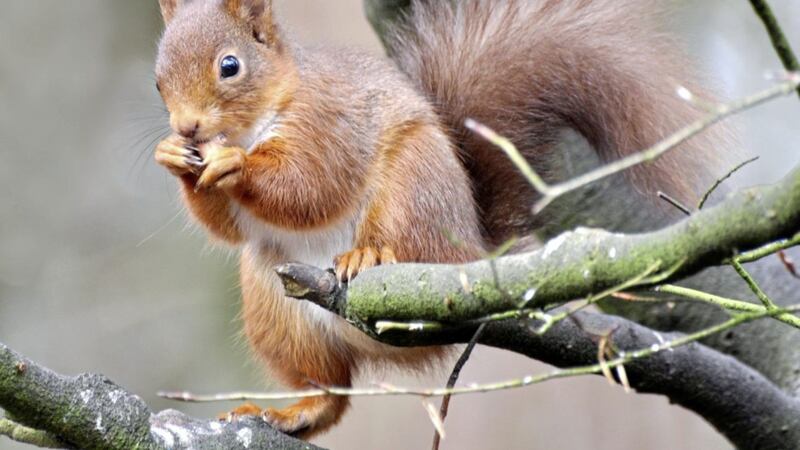A FLASH of red darting across a forest path and into dense woodland is an all too rare treat these days: our native red squirrel population has been hit hard since the introduction of the American grey at the start of the last century.
The greys compete for the same food as the reds and carry diseases that are fatal to the Irish species. The only reds I have ever seen have been in remote woodland, and only by chance rather than design.
As for the greys, I saw one scuttling along Royal Avenue one evening, past CastleCourt and scampering up a tree to get its bearings.
However, according to a survey carried out in 2012 there were indications that the grey squirrel had declined or was no loner present in some area and this has been attributed to the recovery of another native species, the pine marten.
Researchers from the Ryan Institute in NUI Galway have teamed up with Ulster Wildlife and Vincent Wildlife Trust to determine the latest distribution of red and grey squirrels and the pine marten in Ireland.
The group is asking nature-lovers to participate in a citizen science survey and record their sightings of the three mammal species during 2019. The results will allow the team to compare the status of the animals with previous surveys conducted in 1997, 2007 and 2012.
The pine marten has made a considerable recovery in Ireland, since it became protected under the Republic’s Irish Wildlife Act of 1976 and in the north under the Wildlife (NI) Order 1985.
In the midlands of Ireland and Fermanagh, where pine martin densities are highest, grey squirrels have disappeared. It seems the grey squirrels are not able to cope with this predator, either because they are naïve to the dangers, or are becoming stressed when the pine marten is present.
The native red squirrel on the other hand has lived alongside the pine marten for centuries, and although occasionally eaten, they can co-exist quite happily. In fact, with the loss of their competitor grey squirrel, red squirrel numbers have increased and they have returned to woods where they had previously disappeared.
Dr Colin Lawton from Zoology in the Ryan Institute at NUI Galway says: "We are hoping people all over the island of Ireland will take part in this conservation project.
"We have seen changes in the ranges of the red and grey squirrel and the pine marten in the previous surveys and it is vital that we keep recording their progress.
"This is a fascinating story where the recovery of one native species, the pine marten, has slowed the progress of an invasive species, the grey squirrel. The red squirrel, another native species, has shown signs of recovery as a result."
Conor McKinney, from Ulster Wildlife said: "The public are absolutely critical for data collection on this scale and indeed for conservation efforts for red squirrels, pine marten and other species right across the island of Ireland.
"This is a superb opportunity for people to contribute to exciting new research by uploading their squirrel and pine marten photos and letting us know where they saw the animal, how often they see it and what it was doing."
The survey is being conducted with the support of the National Parks and Wildlife Service in the south. Members of the public can record their sightings using the 2019 All-Ireland Squirrel and Pine Marten Survey pages hosted by the National Biodiversity Data Centre in the Republic and CEDaR in Northern Ireland.
More information can be found on the survey Facebook and Twitter pages (both @squirrelsurvey) and the online survey can be found at Biodiversityireland.ie.








